Last week we went to South Korea. The Fulbright program in Asia has travel funds that allow you to go and give presentations in another country. So, with the help of my wonderful ex-student Yangha Kim, I was set up with three very diverse talks. First, I gave a keynote talk at the annual meeting of the Korean Society of Food and Nutrition in Changwon. I don't think I have ever given a keynote address before. This one went well, with about 200 people and a title something like "Zinc: making the connections between the biochemistry and the physiology". Then up to Seoul where I talked to the nutrition department at Ewha Womans University on US foodways - my take on Michael Pollan's ideas. That was fun, though a little rushed because I had to get to #3. That one was on UConn's internationalization activities, for various faculty and administrators from Ewha. They are in many ways far ahead of UConn, with currently 30% of their students studying abroad, with a target number of 60%. They had not quite thought about curriculum in the way we have, so that piece was useful for them.
So that was the work, and then there was exploring Korea. The first remarkable thing was that it was autumn or fall. Their was a nip in the air and there were trees whose leaves were changing colors and falling to the ground. Not very remarkable you might be thinking, but in Hong Kong terms it certainly is. There are temperature variations here, but not really the four seasons that we know and love in the northeast USA. So oohing and aahing over the spectacular colors (largely Japanese maples - or are they Korean maples?) and swishing our feet through piles of leaves was delightful. I hadn't thought about missing fall at all until I saw it again.
I think Korea is not nearly as well known in the USA as is Japan and China. In fact it is a very old and vibrant culture. Seoul is enormous, but much more spread out and not as vertical as Hong Kong. A slower pace, I think. The four of us stayed in a suite in a hotel that was very close in size to the apartment we live in. The kitchen was a noticeable upgrade, with a dishwasher, very modern clothes washer/dryer and, best of all, an oven! Surprisingly, we never got around to baking anything.
They have done a pretty good job of preserving some old palaces in Seoul, despite occasional fires and invasions.. We went to the largest and best preserved one Chankdeokgung. We were only allowed in as part of a group with a guide, but since the guide was good and the cost was minimal, that was just fine. Beautiful buildings of brick and stone and wood, reminiscent of those we had seen in Guangzhou. In fact, my Chinese colleague Pak told me that they were Chinese in design, but sadly, from his point of view, most Chinese palaces like that had been destroyed.
Another interesting place we visited was the DMZ (demilitarized zone). That had been on the top of Jacob and Duncan's list ever since we had been told about this place frozen in time that was now an ecological treasure. Not that you can get in to see the treasure, the DMZ itself is like that because humans don't go in there. But it is the most popular tourist destination in Korea, at least among foreigners. I think fewer Koreans go there. Our bus group had people from about 10 different countries, with most continents, with the exception of Africa, represented. It was a gray and rainy day, at least on the way up there. That seemed appropriate - I was sort of thinking of it as trip to Mordor. We saw the Freedom Bridge, an observation post and then went down into one of the several invasion tunnels that had been dug in an attempt to invade the south.. On the one hand it seemed a little like an amusement park (they do have rides by the Freedom Bridge). On the other, there were soldiers there ready to delete all the photos on your camera if you took forbidden pictures. In fact, the day after we were there, there was a skirmish between the two navies, which resulted in one sailor being killed.
Older Koreans would like to see the country reunited. In fact they built a beautiful new train station that currently sits unused, waiting for the border to reopen and trains to run north again. But the border is over 50 years old, and for younger Koreans, reunification is rather abstract and may not be a good idea.
Well there is much more I could write about, the markets, the food, the outdoor sculptures, but I think I'll stop here and leave you to wonder what on earth we were getting up to in those cool costumes!
Sunday, November 15, 2009
Subscribe to:
Post Comments (Atom)










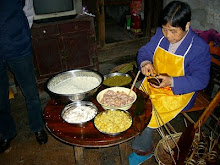









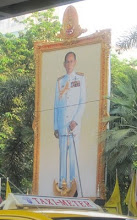




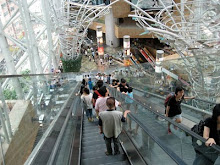




























































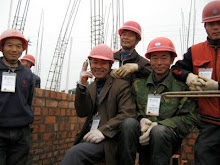
















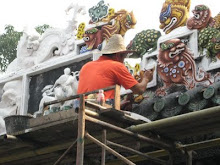




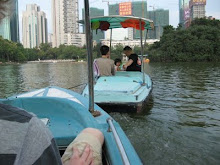






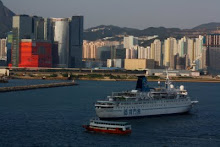

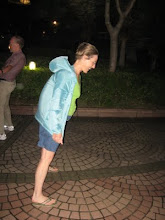







No comments:
Post a Comment